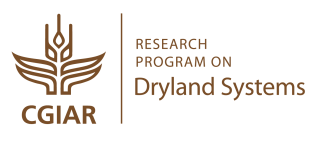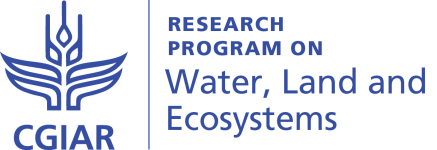Impact Evaluation of SLM Options to Achieve Land Degradation Neutrality
Published on: February 18, 2020, Submitted by Fajr Fradi on: December 4, 2017
Lessons learned from the project Impact Evaluation of SLM Options to Achieve Land Degradation Neutrality.
GeOC logo produced by Filip Djokic
Under the Economics of Land Degradation initiative (www.eld-initiative.org), the project “Impact Evaluation of SLM Options to Achieve Land Degradation Neutrality” focused on enhancing current land use strategies through the development of an impact evaluation tool for sustainable land management (SLM) practices, in order to promote more sustainable solutions that is also in line with national development goals. After few years from the conclusion of the project, sure assertions can be made.
The development of this tool comes as a response to establish sound investment decisions for agricultural and rural development. This can be successfully achieved by considering the context of the intervention, which is highly diverse, especially in drylands. Moreover, the context should gather different disciplines that could interfere in the implementation of these investments and that what the options by context approach is based on. We also note the lack of tools supporting comparative analyses and/or assessments of SLM options by context. Based on that, the tool provides support to private and public stakeholders, answering common questions on land use and its management at different scale. The interdisplinary solutions are very much needed at local scale as well as at regional scale.
The project was implemented in Two study sites in Tunisia, Zaghouan and Medenine, with the partnership of the Institut National de Recherches en Génie Rural, Eaux et Forêts (INRGREF) and Institut des Régions Arides de Médenine (IRA-MEDENINE) in consequence of fruitful previous partnerships with these partners. The Tunisian partners contribute effectively by fueling the database of the tool by well-documented SLM techniques in the two sites. They also engage their students to incorporate GeOC into their master thesis. The documentation process involved also national development officers and decision makers at local and national level who were welcoming to such collaboration and curious to work on the tool. This led to a complete documentation of 29 SLMs in the two sites: 11 in Zaghouan and 18 in Medenine in three months. These documented SLM techniques created 51 context-specific solution to tackle land degradation in these two sites.
But let’s not forget that GeOC has a global aspect and it provides for each country:
(1) List of current SLM options and their maps;
(2) Maps of Context Similarity Domain, where there is a high potential for successful implementation of given SLMs,
(3) Maps of land degradation hotspots at country scale where national efforts on SLM are likely to be most effective in obtaining net zero land degradation or LDN.
These are three crucial areas for national stakeholders to jointly develop out-scaling scenarios and action pathways of spatially-explicit SLMs aimed at achieving LDN. In fact, objectives of this project and the perception of this tool are beyond these facts and they exceeded the allocated time and funds of the project. In fact, the focus was on the software development of a user-friendly tool, which will be the starting point for an open platform of SLM techniques, and practices in global context. Further enhancement of the tool are already noted and - why not - other countries to be involved in the future?
Acknowledgement
The aims of the project are being achieved thanks to the synergic efforts of GIZ, the CGIAR Research Programs on Dryland Systems (CRP-DS), Water, Land and Ecosystems (CRP-WLE), the International Center for Agricultural Research in the Dry Areas (ICARDA), the ICARDA Geoinformatics Unit (GU), Institution de la Recherche et de l’Enseignement Supérieur Agricoles (IRESA), Institut National de Recherches en Génie Rural, Eaux et Forêts (INRGREF), Institut des Régions Arides de Médenine (IRA). The tool is powered by iMMAP, CodeObia, and Amazon Web Services (AWS).
Monitoring, Evaluation & Learning (MEL) has been developed by the International Center for Agricultural Research in Dry Areas (ICARDA) under the framework of the CGIAR Research Program on Dryland Systems (CRP-DS), within an extended capacity development experience including the International Potato Center (CIP), the World Agroforestry Center (ICRAF), Roots, Tubers and Bananas (RTB), Gran Legumes (CRP-GL) and Dryland Cereals (CRP-DC). The online platform is powereb by CodeObia, iMMAP and Amazon Web Services (AWS).






